Home Automation Installation Financial Model

5-Year Financial Projections
100% Editable
Investor-Approved Valuation Models
MAC/PC Compatible, Fully Unlocked
No Accounting Knowledge Needed
Home Automation Installation Financial Model
Bundle Includes:
-
Financial Model
-
Business Plan
-
Pitch Deck
-
Financial Dashboard
ALL IN ONE MEGA PACK - CONSIST OF:
Home Automation Installation Financial Model/Business Plan Excel Template
Pitch Deck Template For PowerPoint, Keynote & Google Slides
Business Plan Guide and Business Plan Template in MS Word Format
Financial Dashboard in Excel To Track Your Business Performance
HOME AUTOMATION INSTALLATION FINANCIAL MODEL FOR STARTUP INFO
Highlights
This comprehensive 5-year financial planning template serves as a robust financial model for smart home systems, designed to support both startups and established businesses in the home automation installation sector. It provides a detailed home automation business financial plan, enabling users to conduct investment model analysis, break-even analysis for home automation installation, and cash flow analysis for home automation projects. With features covering home automation installation expense modeling, profit and loss projection, and home automation market growth financial model, this tool helps evaluate startup ideas, forecast project budgets, and develop home automation service pricing strategies—all fully unlocked and editable to tailor your home automation startup financial model for optimal return on investment and financial feasibility.
The home automation installation financial model Excel template effectively addresses common pain points faced by buyers by offering a comprehensive home automation business financial plan that eliminates the need for complex programming or costly external consultants. This ready-made model streamlines financial planning for home automation services through automated cash flow analysis, break-even analysis home automation installation, and profit and loss projection home automation features, enabling users to accurately forecast home automation project budget forecasts and smart home system revenue projection with ease. Its user-friendly design supports financial feasibility of home automation ventures, investment model for home automation decisions, and operational cost modeling, empowering business owners to focus on growth rather than struggling with financial metrics or navigating the home automation startup financial model independently.
Description
The home automation installation cost analysis is encompassed within a comprehensive financial model for smart home systems that projects five years of monthly and yearly performance, including pro forma income statements, balance sheet forecasts, and startup cash flow statements. Designed for both startups and existing businesses, this financial model integrates a home automation project budget forecast and investment model that supports discounted cash flow valuation using projected free cash flows while calculating key financial metrics such as profitability, liquidity, and break-even analysis for home automation installation. The model's dynamic structure facilitates cash flow analysis and includes a profit and loss projection, operational cost modeling, and revenue projections based on detailed sales forecasts, thus providing a robust financial feasibility and return on investment framework essential for financial planning, business strategies, and securing investments in home automation services.
HOME AUTOMATION INSTALLATION FINANCIAL MODEL FINANCIAL MODEL REPORTS
All in One Place
A comprehensive home automation financial model integrates the income statement, cash flow analysis, and balance sheet to deliver a full financial plan. Updated monthly, this financial planning for home automation services ensures accurate tracking of expenses and revenues. At year-end, a detailed home automation project budget forecast and profit and loss projection provide a holistic view of the business’s financial health. Regardless of size, every home automation startup should develop a 5-year sales forecast model and break-even analysis to assess the financial feasibility and maximize return on investment in smart home system ventures.

Dashboard
Access a dynamic Excel dashboard offering a comprehensive overview of your home automation business financial plan. Easily analyze cash flow, installation cost analysis, and profit and loss projections while sharing real-time insights with stakeholders. Streamline your financial planning for home automation services with clear revenue projections, break-even analysis, and investment models, empowering informed decision-making and driving growth.
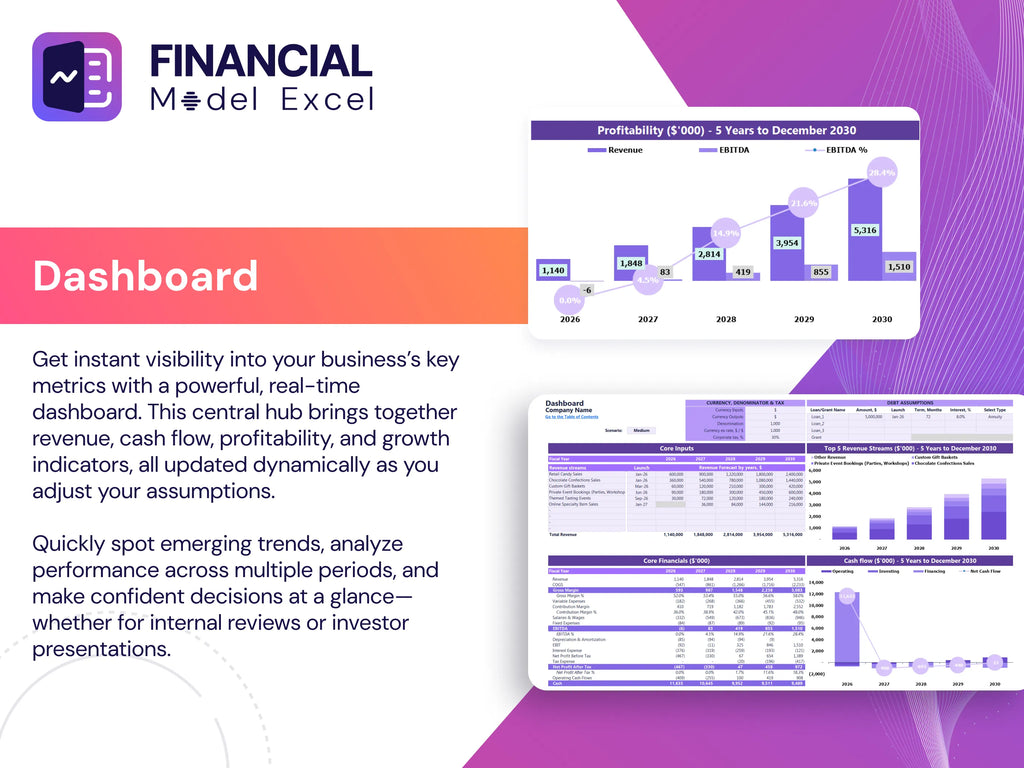
Business Financial Statements
When developing a home automation business financial plan, creating an intuitive and comprehensive financial model is crucial. Your forecasted Excel template should include essential elements such as a profit and loss projection, cash flow analysis, and a break-even analysis for home automation installation. A clear financial model for smart home systems ensures accurate home automation project budget forecasts and facilitates effective financial planning for home automation services. Keeping the model user-friendly enables seamless collaboration and enhances decision-making, driving successful investment models and revenue projections in this rapidly growing market.
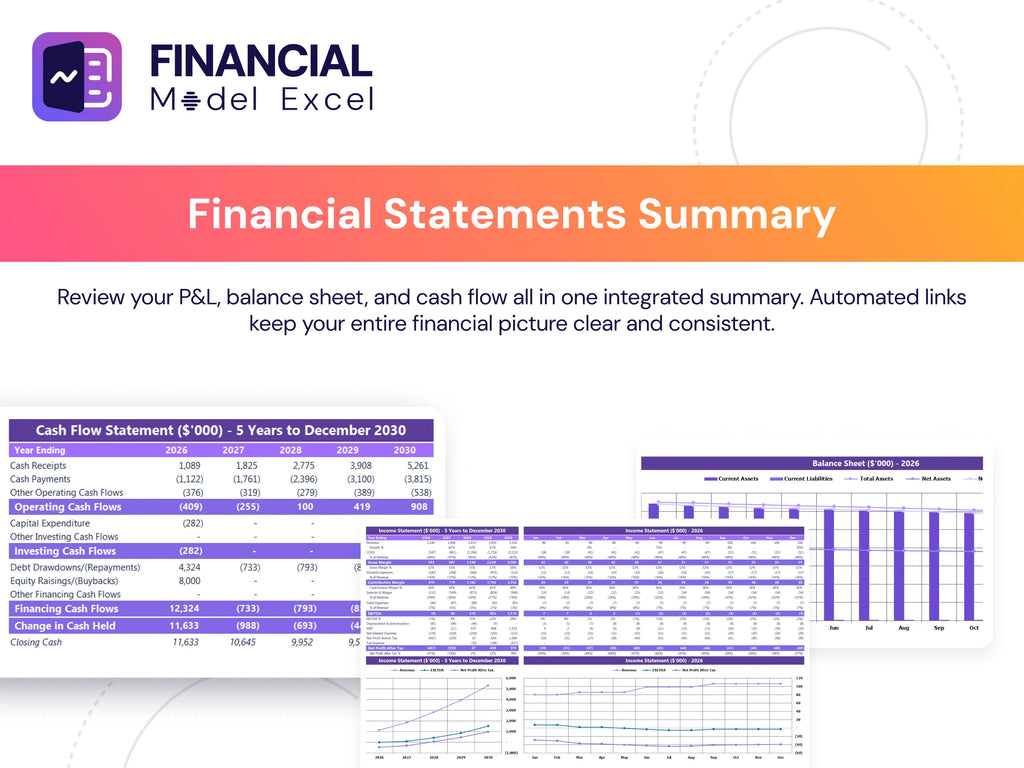
Sources And Uses Statement
A thorough home automation project budget forecast includes a detailed sources and uses of funds statement, crucial for financial planning and cash flow analysis. This report outlines funding sources alongside line-by-line uses, ensuring alignment with the home automation business financial plan. For smart home system investment models, sources should at least match uses to maintain financial feasibility. Excess funds can fund expansion, while a shortfall signals the need for additional equity. Accurate expense modeling and break-even analysis support sound decision-making, boosting confidence in revenue projections and return on investment for home automation ventures.
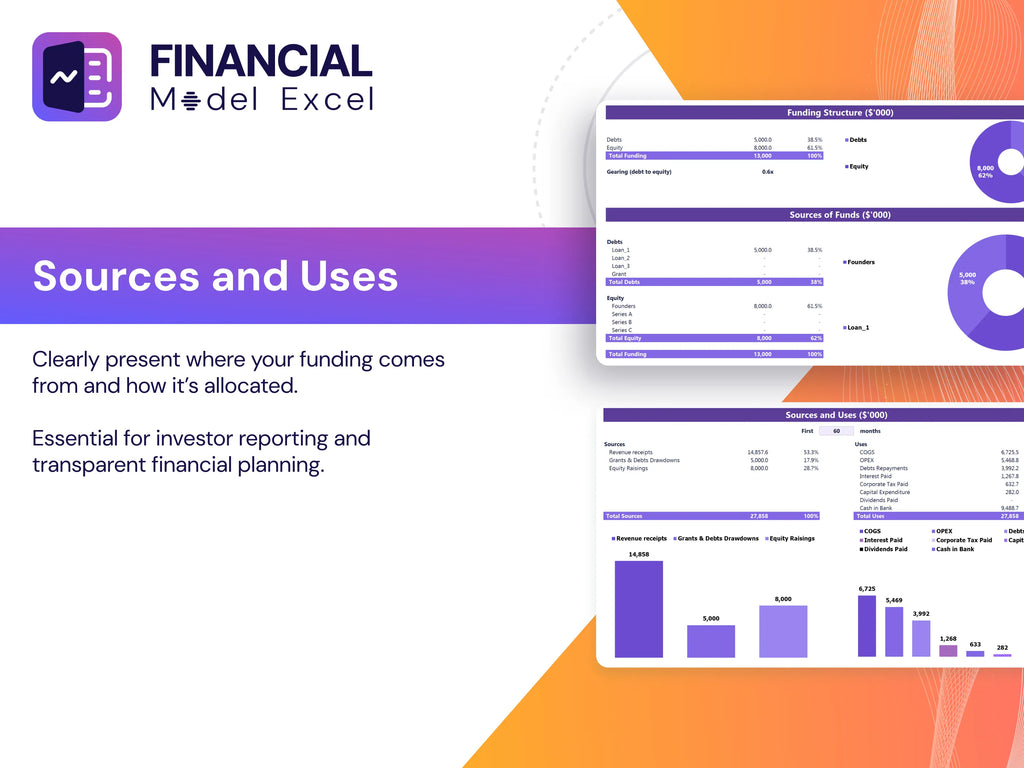
Break Even Point In Sales Dollars
A break-even point marks when a home automation business covers all costs without profit or loss. Utilizing a break-even sales calculator is essential for analyzing the relationship between fixed costs, variable costs, and revenue. Businesses with lower fixed costs typically achieve break-even faster, reflecting in their break-even analysis and home automation installation expense modeling. Incorporating this into a comprehensive financial model for smart home systems ensures accurate cash flow analysis and enhances financial planning for home automation services, ultimately supporting a robust home automation business financial plan.
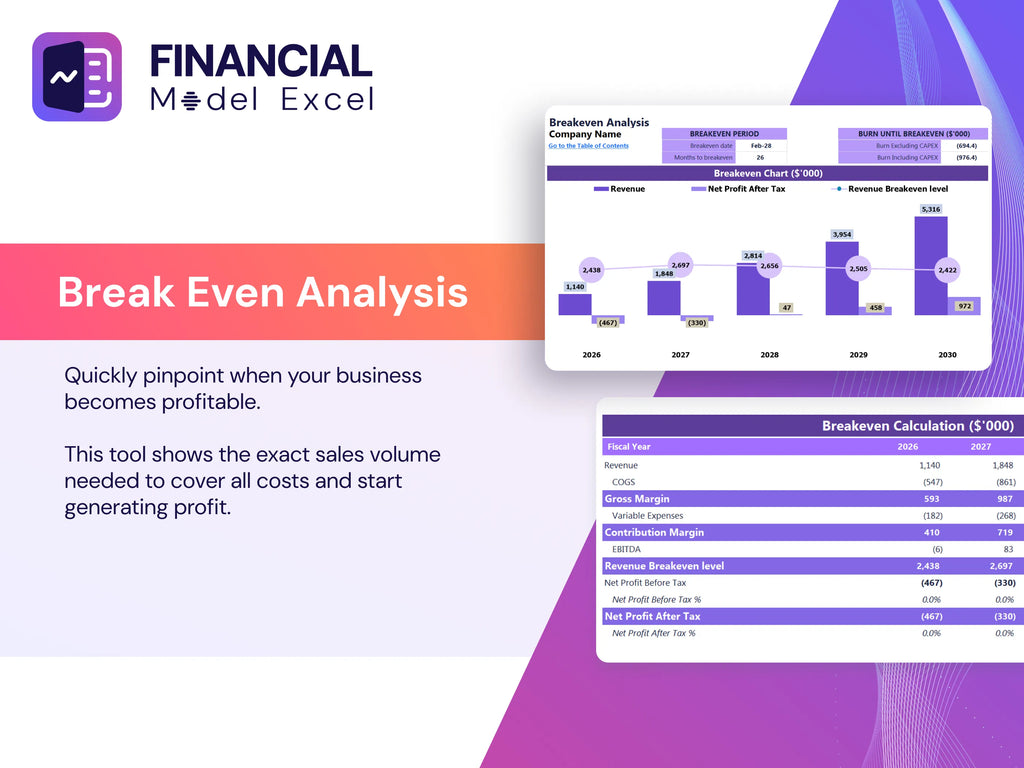
Top Revenue
The Top Revenue tab in this three-statement financial model Excel template enables detailed home automation sales forecast modeling by product or service. It facilitates comprehensive revenue projection and cash flow analysis for home automation businesses, allowing users to simulate profitability and assess financial feasibility across scenarios. With insights into revenue depth and revenue bridges, alongside demand forecasts by period (e.g., weekdays vs. weekends), you can optimize resource allocation—such as manpower and inventory—supporting effective financial planning and operational cost modeling for smart home system ventures.
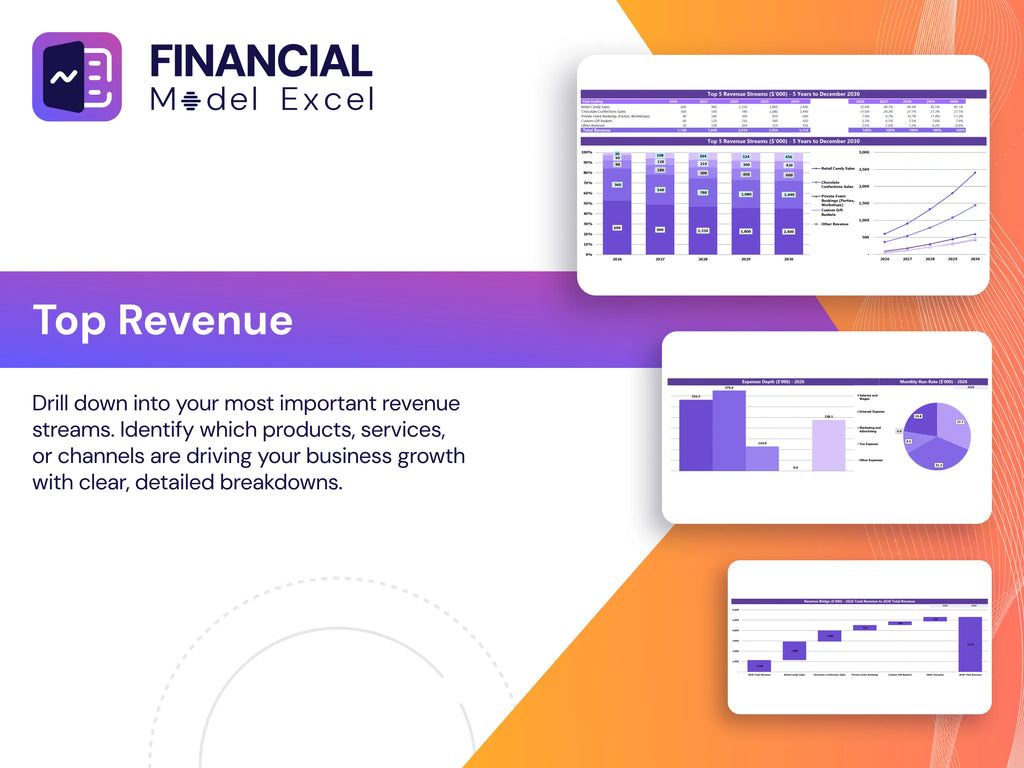
Business Top Expenses Spreadsheet
The Home Automation Startup Financial Model’s Top Expenses page provides a comprehensive expense tracking system, categorizing costs into four key areas. This detailed home automation installation cost analysis enables precise financial planning and cash flow analysis for smart home systems. By clearly identifying fixed and customer acquisition expenses, the model supports effective budgeting and expense modeling. Leveraging this financial framework ensures you maintain control over your finances, optimize operational cost models, and enhance the financial feasibility of your home automation business for sustained growth and profitability.
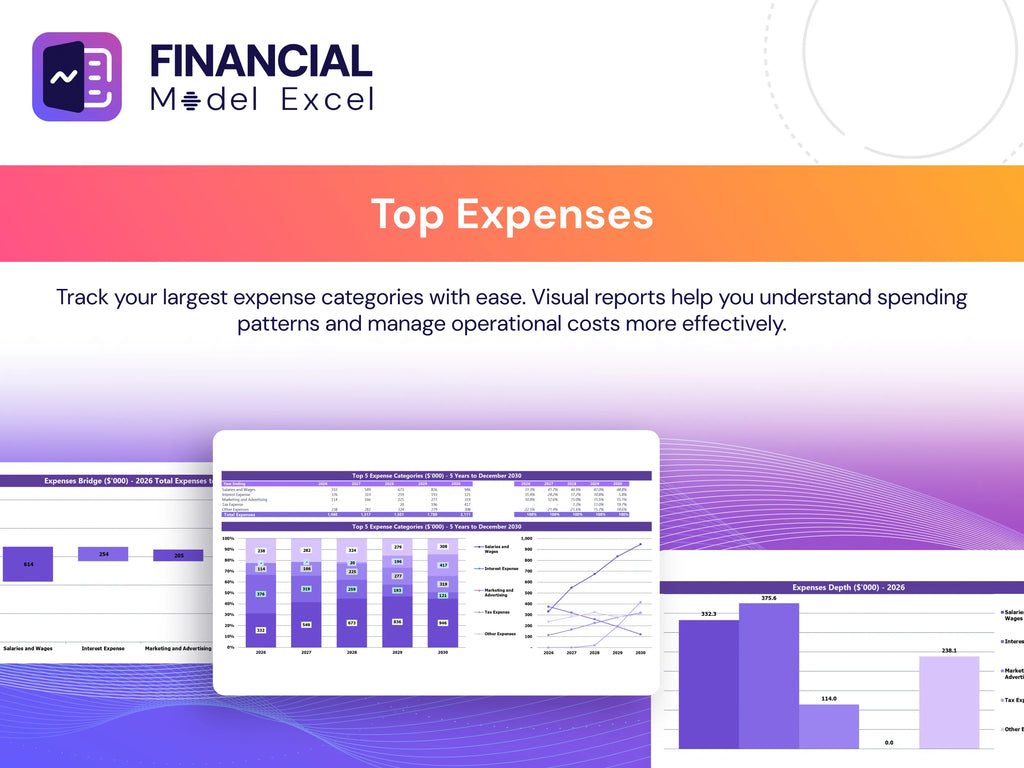
HOME AUTOMATION INSTALLATION FINANCIAL MODEL FINANCIAL PROJECTION EXPENSES
Costs
Effortlessly forecast your home automation business’s fixed operating expenses—including R&D and SG&A—with our streamlined 5-year financial model. Designed for clarity and ease, this automated template ensures accurate home automation installation expense modeling and cash flow analysis without manual updates. Ideal for developing a comprehensive home automation startup financial plan, it supports precise profit and loss projection, break-even analysis, and smart home system revenue projection—all essential for confident financial planning and investment modeling in the growing smart home market.
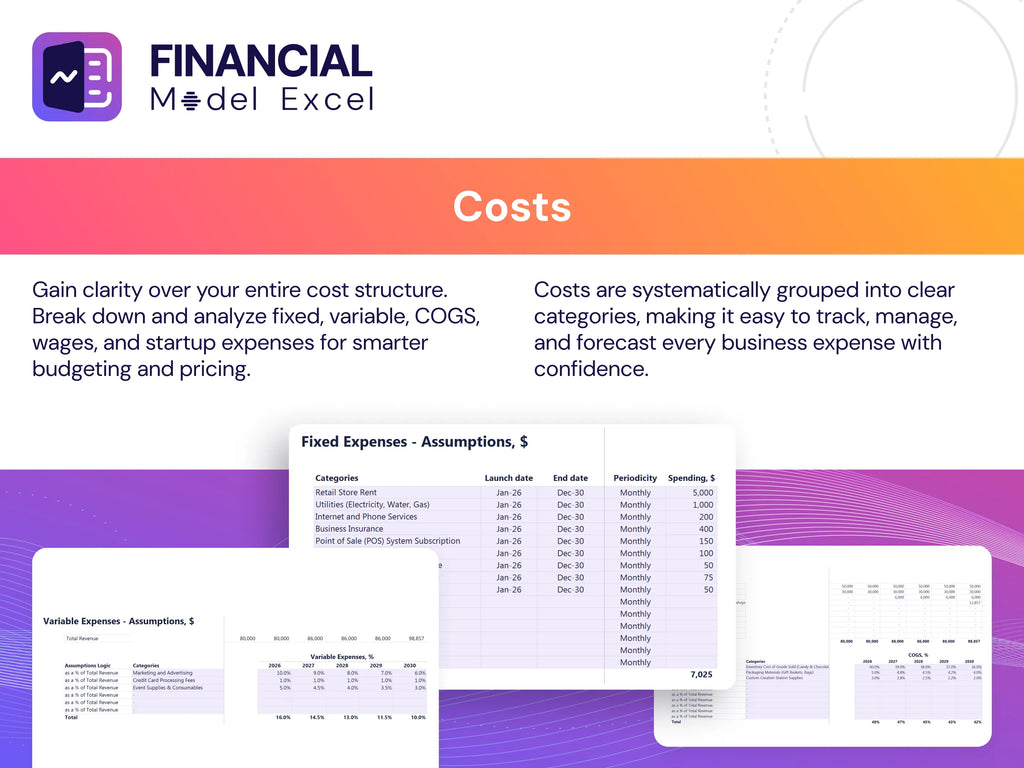
CAPEX Spending
This comprehensive Excel financial model template simplifies home automation installation cost analysis by integrating CapEx calculations with advanced pre-built formulas. Designed for startups, it seamlessly links capital expenditures with the profit and loss statement and pro forma balance sheet, enabling precise financial planning for smart home systems. Ideal for developing a robust home automation business financial plan, this tool supports investment modeling, cash flow analysis, and revenue projections—empowering stakeholders to forecast budgets, analyze profitability, and optimize return on investment for home automation projects effectively.
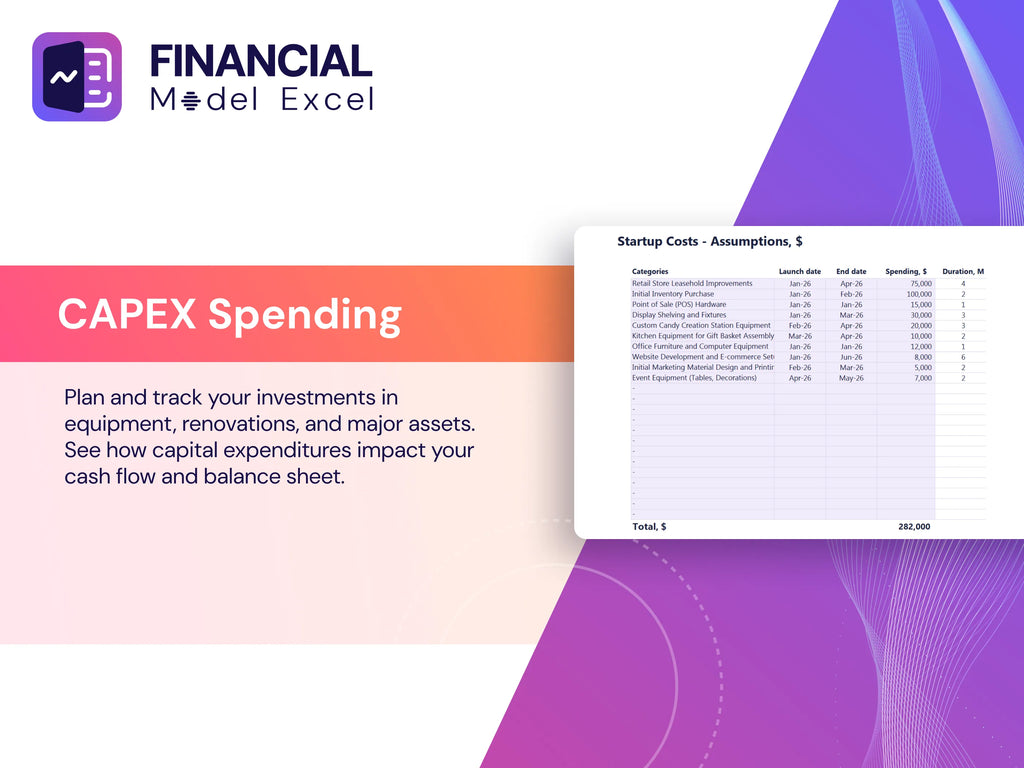
Loan Financing Calculator
A comprehensive loan amortization schedule is essential in the financial planning for home automation services. It outlines periodic payments, detailing principal and interest over the loan term, aiding in precise home automation installation cost analysis. Integrated within a projected cash flow statement template, this schedule supports cash flow analysis for home automation projects, enabling businesses to track outstanding balances and repayment plans effectively. Leveraging such financial models enhances the home automation business financial plan, ensuring accurate profit and loss projection and strengthening investment models for smart home systems.
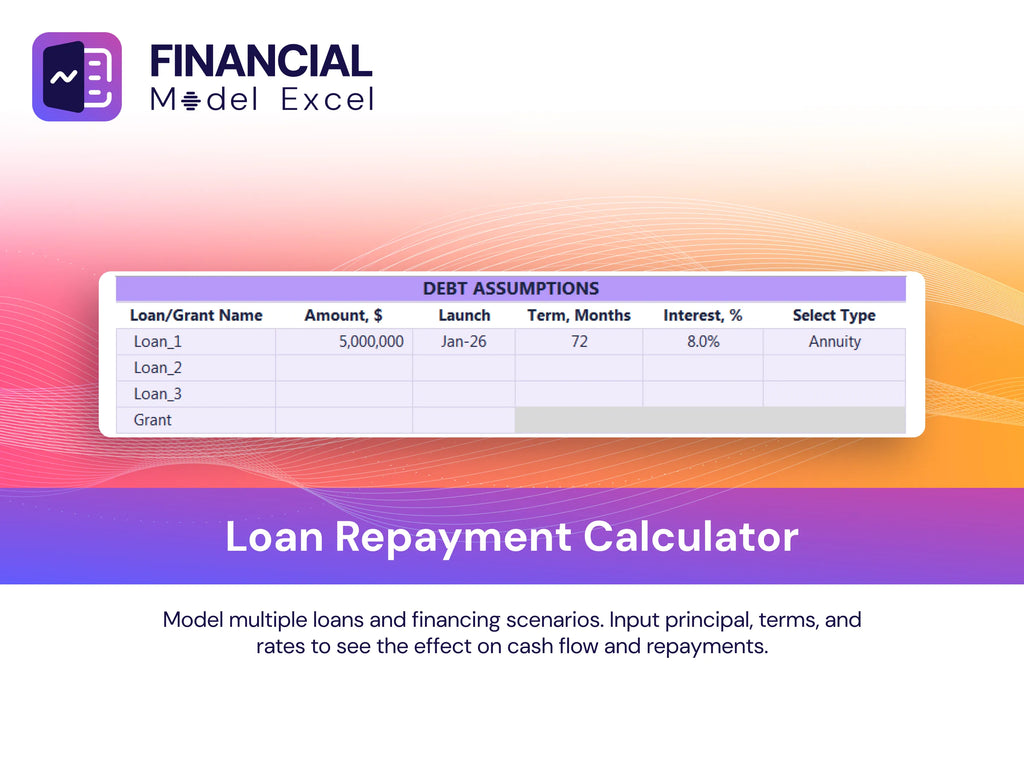
HOME AUTOMATION INSTALLATION FINANCIAL MODEL EXCEL FINANCIAL MODEL METRICS
Financial KPIs
Gross Profit Margin (GPM) is a key financial metric in the home automation business financial plan, reflecting the difference between sales revenue and installation or operational expenses. An improving GPM indicates effective home automation installation expense modeling and financial planning for home automation services, showcasing rising revenues alongside controlled costs. This metric is vital for cash flow analysis and profit and loss projection in smart home system revenue projections. Understanding GPM enables accurate home automation project budget forecasts and informs home automation service pricing strategies, ultimately supporting a robust home automation startup financial model and ensuring long-term financial feasibility.

Cash Flow Forecast Excel
A robust home automation startup financial model includes a detailed cash flow analysis to monitor liquidity and financing needs. Our pro forma cash flow template integrates payable and receivable days, annual revenue, working capital, and long-term debt to project net cash flow accurately. This enables precise home automation project budget forecasts and return on investment assessments. By leveraging this financial planning tool, businesses can confidently manage operational costs, optimize cash flow, and support investment models for home automation services, ensuring financial feasibility and sustainable growth in the smart home systems market.
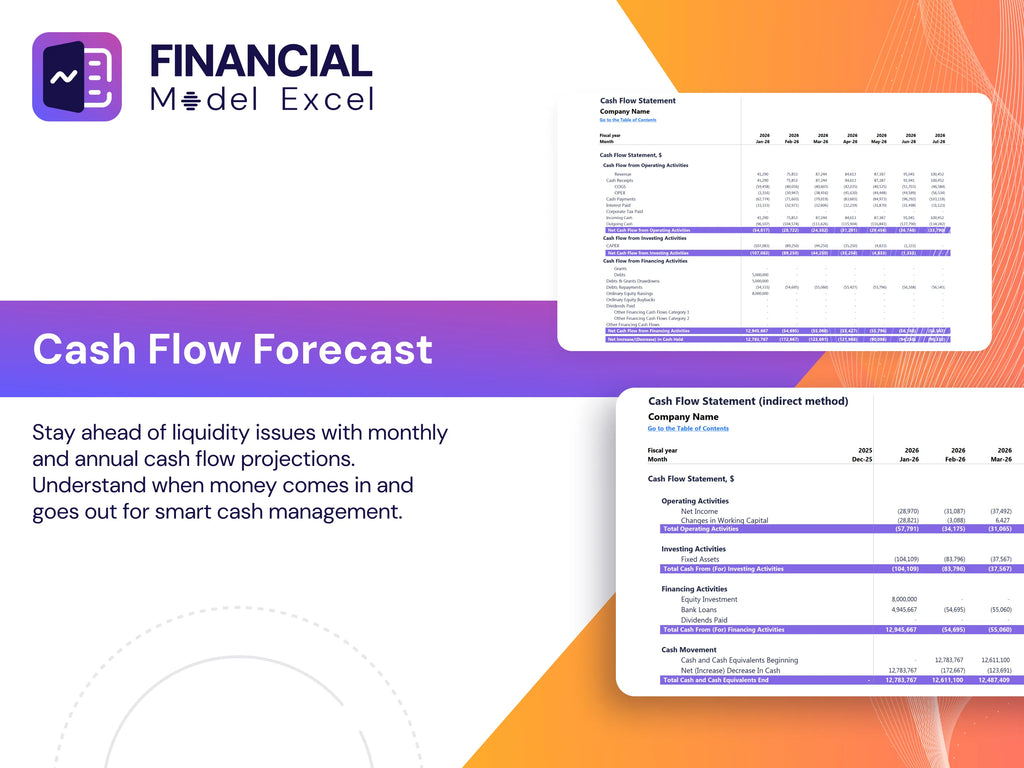
KPI Benchmarks
Our home automation business financial plan template offers comprehensive industry and financial benchmarks, empowering clients to assess company performance against leading competitors. This home automation market growth financial model provides critical insights to identify high-impact opportunities, optimize your home automation installation cost analysis, and enhance your smart home system revenue projection. Leverage this tool for effective financial planning for home automation services, enabling data-driven decisions that drive profitability and long-term success in a competitive market.
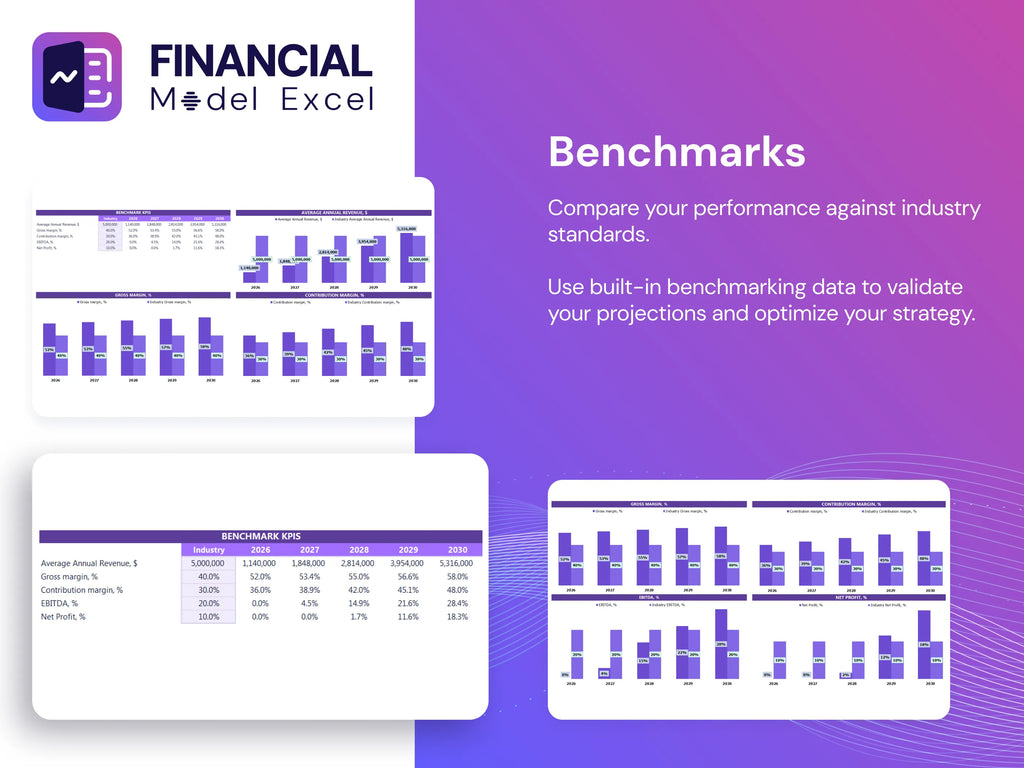
P&L Statement Excel
Incorporating a comprehensive home automation installation cost analysis and financial model is essential for success. Our business financial plan offers detailed profit and loss projections, including net and gross margin insights. This robust financial forecasting tool enables precise revenue projections and cash flow analysis for smart home systems, empowering you to evaluate the financial feasibility and optimize your investment model. By leveraging this financial planning framework, you gain confidence, accurately forecast profitability, and strengthen your company’s market position in the competitive home automation landscape.
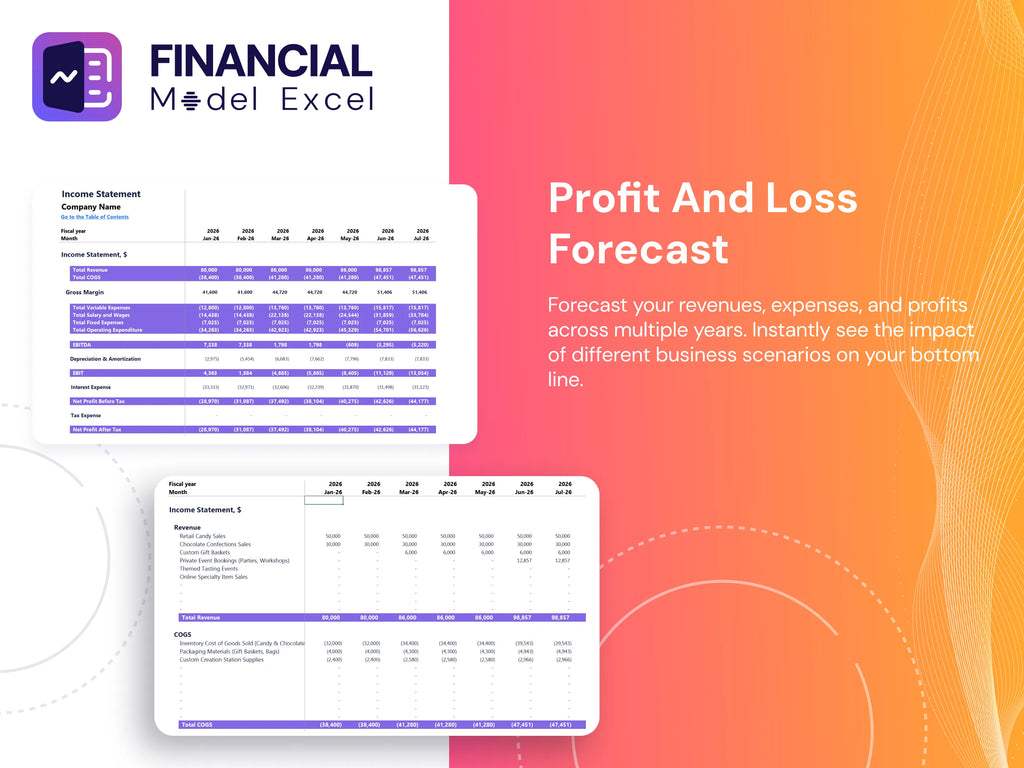
Pro Forma Balance Sheet Template Excel
A comprehensive home automation financial model integrates a projected balance sheet, profit and loss projections, and cash flow analysis to evaluate business performance over time. The pro forma balance sheet highlights assets, liabilities, and net worth, essential for assessing financial feasibility and liquidity ratios. Meanwhile, the P&L statement captures operational profitability, driving smart home system revenue projections and expense modeling. Combining these core statements within a home automation business financial plan enables accurate investment modeling, break-even analysis, and informed financial planning—key to optimizing return on investment and supporting sustainable growth in the smart home market.
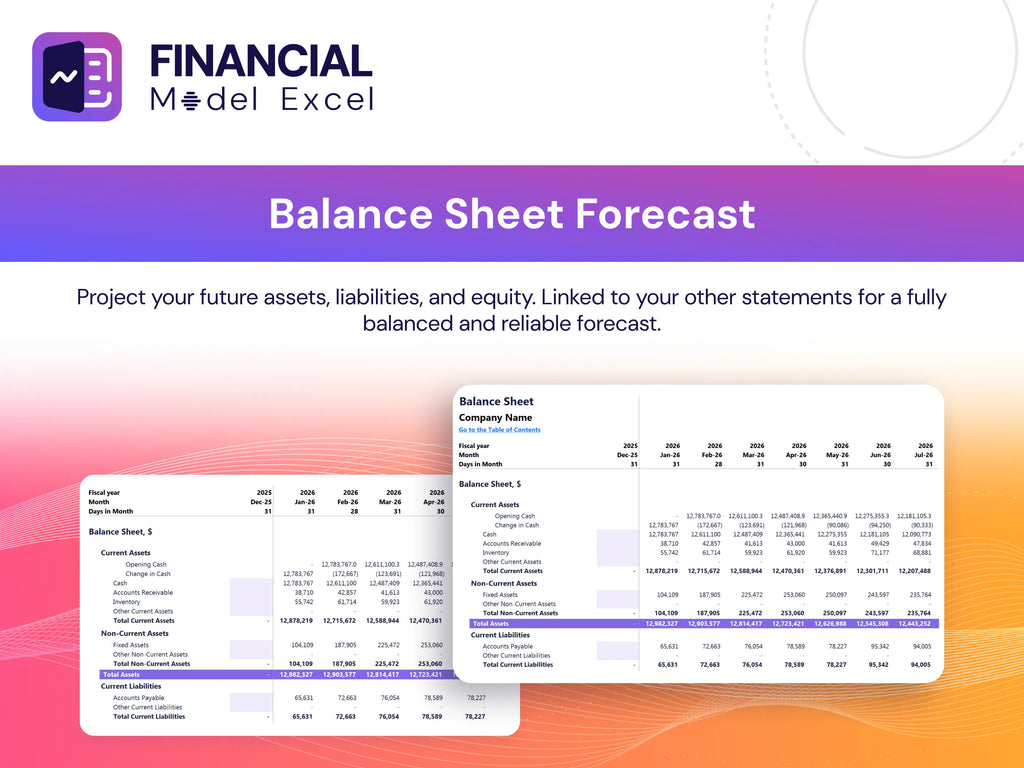
HOME AUTOMATION INSTALLATION FINANCIAL MODEL FINANCIAL PROJECTION TEMPLATE VALUATION
Startup Valuation Model
Our home automation startup financial model incorporates a comprehensive home automation installation cost analysis alongside a detailed cash flow analysis for home automation projects. Utilizing Weighted Average Cost of Capital (WACC), we precisely assess capital costs by balancing equity and debt, a critical metric for lenders. The Discounted Cash Flows (DCF) calculation projects future cash flows, enabling accurate financial feasibility evaluation and smart home system revenue projection. This robust financial planning for home automation services supports break-even analysis and investment modeling, ensuring informed decision-making and optimized return on investment for home automation projects.
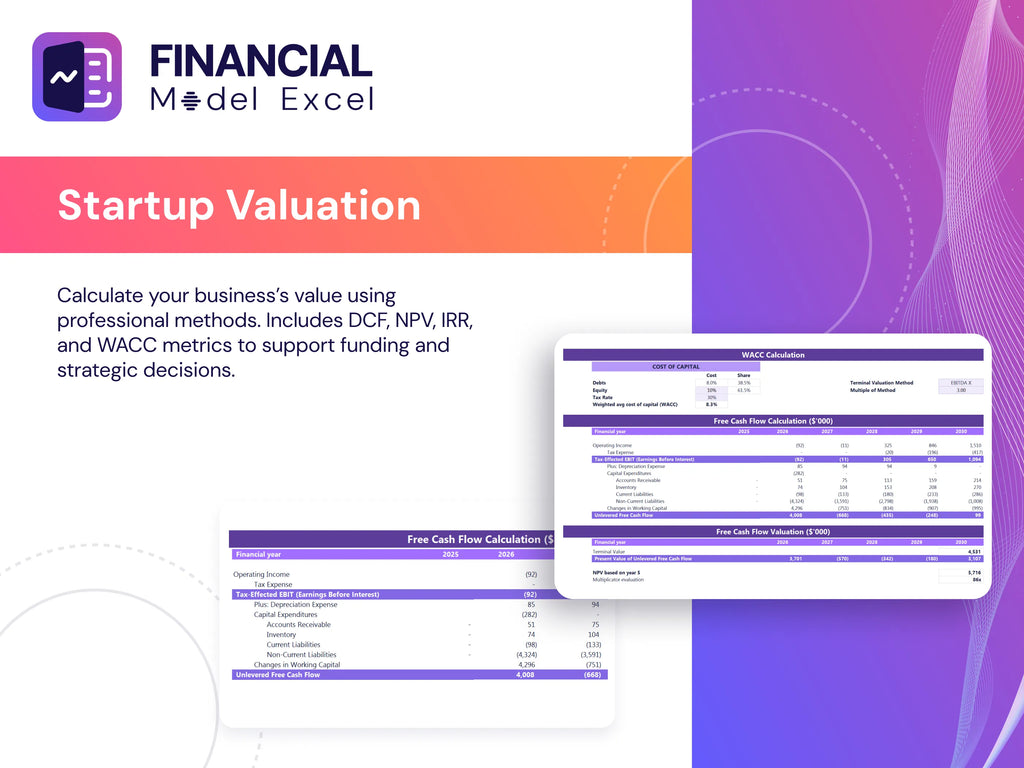
Cap Table
In our home automation startup financial model, the capitalization table (Cap table) plays a vital role by detailing the company's ownership structure. It outlines shares issued, investor contributions, and the percentage ownership of each stakeholder. This financial planning tool is essential for accurate investment modeling, cash flow analysis, and crafting a robust home automation business financial plan. Understanding your Cap table supports effective budgeting, enhances investor confidence, and ensures precise profit and loss projections for your smart home system venture.
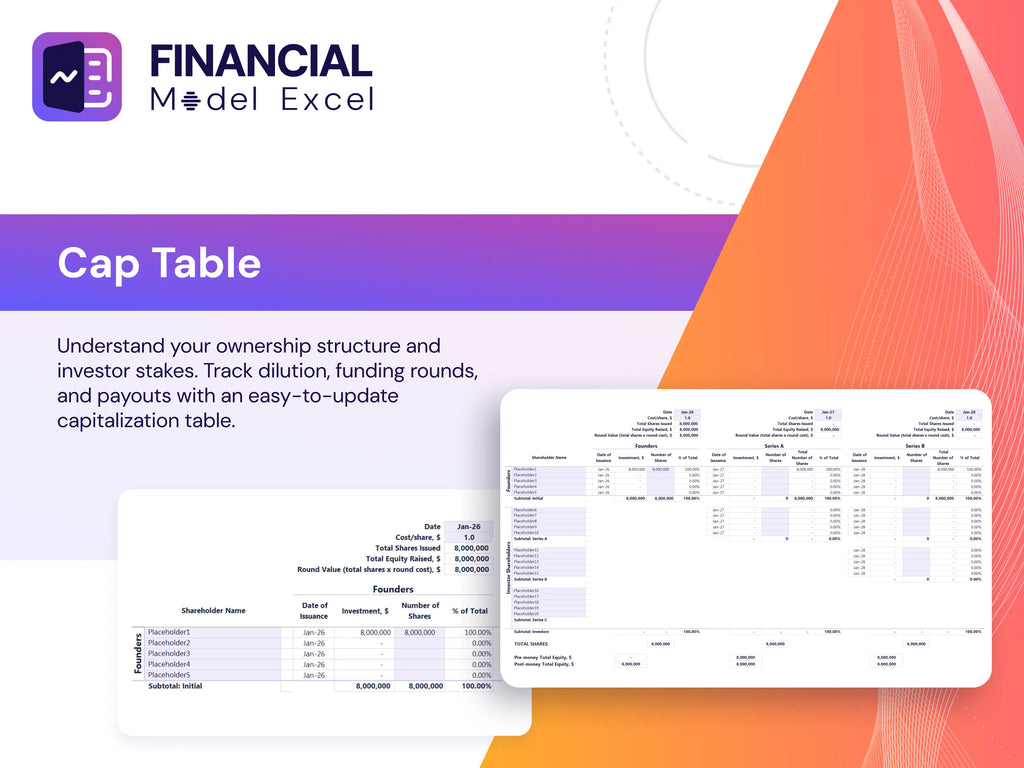
HOME AUTOMATION INSTALLATION FINANCIAL MODEL TEMPLATE STARTUP ADVANTAGES
Optimize profitability and guide smart investments with our comprehensive 5-year home automation financial model.
Optimize profits and accuracy by reassessing assumptions using a bottom-up home automation installation financial model.
The financial model enables precise cost analysis and optimized budgeting, maximizing profitability in home automation installation projects.
A robust financial model ensures sufficient cash flow to confidently pay suppliers and employees on time.
Accurate home automation financial models optimize expense forecasts, ensuring strategic budgeting and maximizing project profitability.
HOME AUTOMATION INSTALLATION PRO FORMA TEMPLATE EXCEL ADVANTAGES
Unlock funding success with a comprehensive financial model for smart home systems, ensuring clear investment and profit insights.
Impress investors confidently with a strategic, proven Home Automation Financial Model delivering precise budget forecasts and ROI insights.
Our financial model for smart home systems builds stakeholder trust through accurate revenue projections and investment insights.
A robust financial model for smart home systems builds investor confidence through clear, precise monthly cash flow projections.
Our financial model ensures precise budgeting, maximizing profits while avoiding cash flow shortfalls in home automation projects.
A financial model for home automation ensures accurate cash flow forecasting, preventing costly shortfalls and supporting strategic growth.
Our financial model ensures confident, data-driven decisions, maximizing profitability and growth in smart home system investments.
Our financial model ensures precise planning, risk management, and accurate 5-year cash flow and growth forecasting.
The financial model offers a convenient all-in-one dashboard for precise home automation project budget forecasting and ROI analysis.
The financial model ensures accurate forecasting, profit projections, and comprehensive performance insights for smart home business success.





